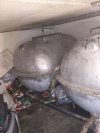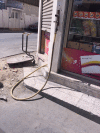Two siblings with fatal Chromobacterium violaceum sepsis linked to drinking water
- PMID: 26323978
- PMCID: PMC4693122
- DOI: 10.1136/bcr-2015-210987
Two siblings with fatal Chromobacterium violaceum sepsis linked to drinking water
Abstract
Chromobacterium violaceum is a Gram-negative organism found in water and soil. C. violaceum is not usually pathogenic in humans; only approximately 150 human cases have been reported worldwide. C. violaceum bacteraemia progresses rapidly, leading to fatal sepsis on dissemination to multiple organs within a short time. We describe two cases of fatal septicaemia caused by C. violaceum in siblings. Our initial impression was that these cases were associated with an undiagnosed immunodeficiency in the siblings. However, detailed patient histories revealed a potential underlying immunodeficiency in only one patient. These findings prompted us to investigate possible environmental exposure. We identified C. violaceum in filtered water that was sold to the family at a nearby store. This discovery led to a public health alert and closer scrutiny of similar stores by the Ministry of Health.
2015 BMJ Publishing Group Ltd.
Figures




References
-
- Byamukama D, Farnleitner AH, Kansiime F et al. . Contrasting occurrence of Chromobacterium violaceum in tropical drinking water springs of Uganda. J Water Health 2005;3:229–38. - PubMed
Publication types
MeSH terms
Substances
LinkOut - more resources
Full Text Sources
Other Literature Sources
Medical
